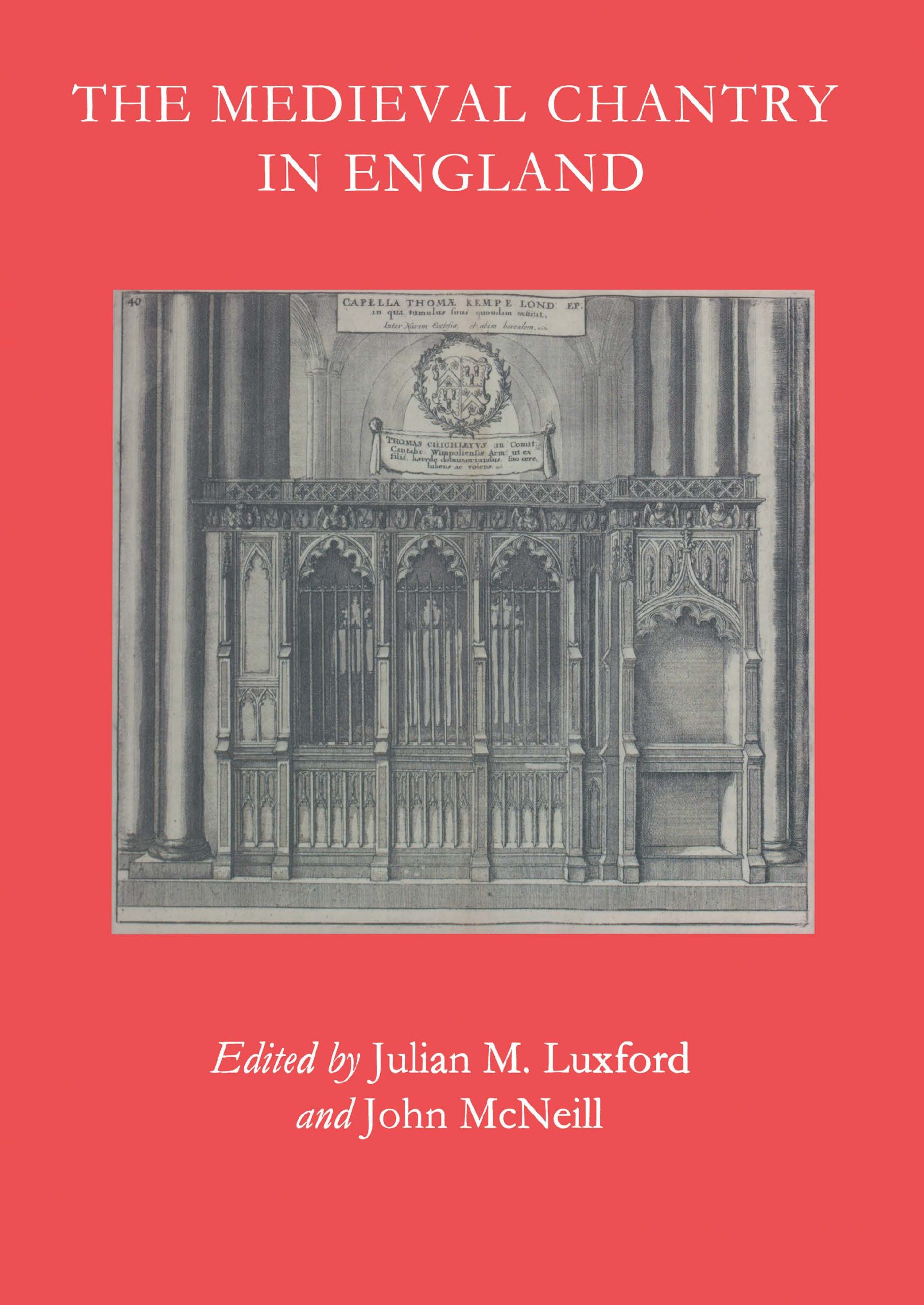Chantries were religious institutions endowed with land, goods and money. At their heart was the performance of a daily mass for the spiritual benefit of their founders, and the souls of all faithful dead. To Church reformers, they exemplified some of medieval Catholicism’s most egregious errors; but to the orthodox they offered opportunities to influence what occurred in an unknowable afterlife. The eleven essays presented here lead the reader through the earliest manifestations of the chantry, the origins and development of ‘stone-cage’ chapels, royal patronage of commemorative art and architecture, the chantry in the late medieval parish, the provision of music and textiles, and a series of specific chantries created for William of Wykeham, Edmund Audley, Thomas Spring and Abbot Islip, to the eventual history and the cultural consequences of their suppression in the mid-16th century.
Table of Contents
Chapter 1: John McNeill, A Prehistory of the Chantry
Chapter 2: Julian Luxford, The Origins and Development of the English ‘Stone-Cage’ Chantry Chapel
Chapter 3: Antje Fehrmann, English Royal Chantry Provision
Chapter 4: Clive Burgess, Chantries in the Parish
Chapter 5: Roger Bowers, Liturgy and Music in the Role of the Chantry Priest
Chapter 6: Kate Heard, ‘Such stuff as dreams are made on’: Textiles and the Medieval Chantry
Chapter 7: Anna Eavis, The Chantries of William of Wykeham
Chapter 8: Cathy Oakes, In pursuit of heaven: The two Chantry Chapels of Bishop Edmund Audley at Hereford and Salisbury Cathedrals
Chapter 9: Charles Tracy, Thomas Spring’s Chantry and Parclose at Lavenham, Suffolk.
Chapter 10: John Goodall, The Jesus Chapel or Islip’s Chantry at Westminster Abbey
Chapter 11: Phillip Lindley, ‘Pickpurse’ Purgatory, the Dissolution of the Chantries and the Suppression of Intercession for the Dead
